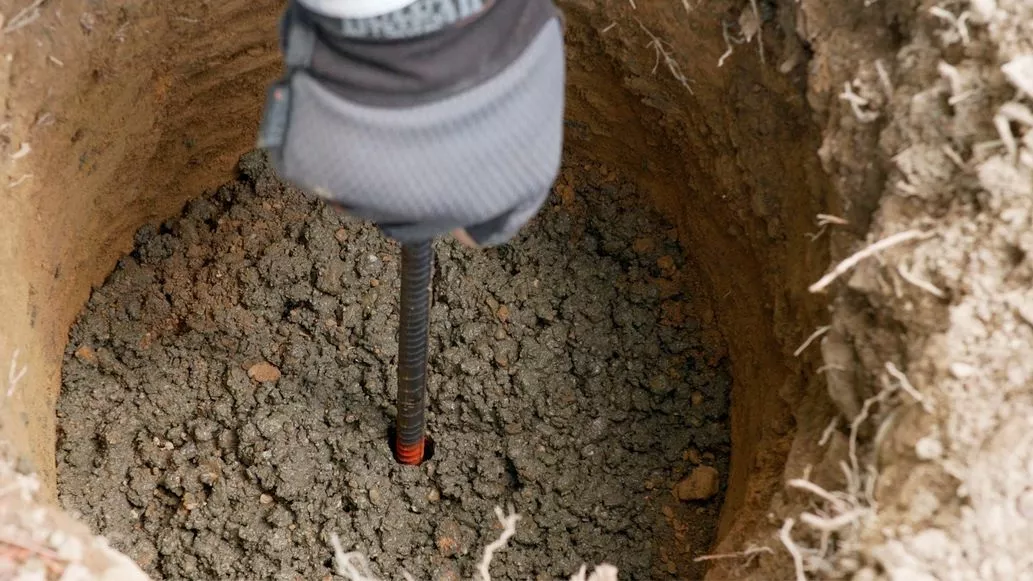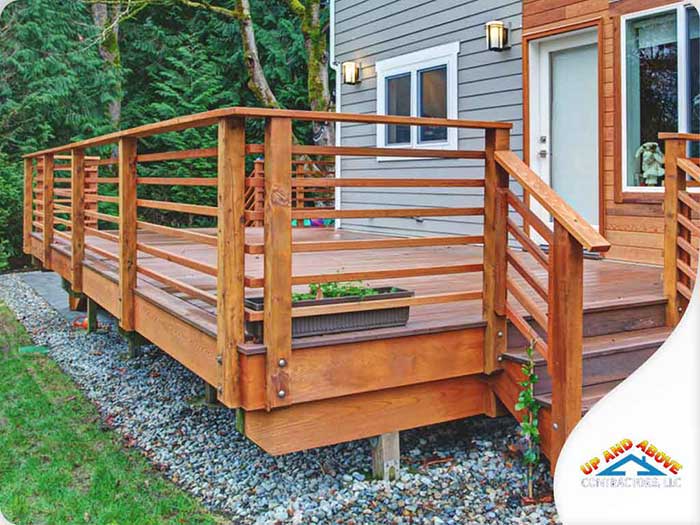Selecting the Right Deck Footings for Stability and Toughness
When it pertains to developing a deck, one of the most critical choices you will certainly make is selecting the best footings for security and sturdiness. The longevity and safety and security of your deck depend heavily on the kind of footings you choose, as they give the important assistance and stability to withstand the examination of time. With a myriad of options readily available, it can be frustrating to determine which grounds are best suited for your details requirements. In this conversation, we will discover the various sorts of deck footings, take into consideration the essential factors to evaluate when deciding, and dig right into the benefits and drawbacks of various choices. By the end, you will certainly have a clearer understanding of the selections available and be far better geared up to make a notified choice for your deck project.
Sorts Of Deck Grounds
These footings consist of a round opening filled up with concrete, which gives a strong structure for the deck articles. Concrete pier grounds are fairly simple to set up and use exceptional security, making them a prominent option for lots of deck jobs.
Another sort of footing is the helical pile ground. Helical heaps are steel shafts with helical plates connected to them. These grounds are set up by screwing them into the ground, which produces a safe foundation for the deck. Helical pile footings are perfect for areas with tough dirt problems, as they can be set up in practically any sort of soil. They also enable very easy modification and leveling of the deck if required.
Conversely, some builders decide for precast concrete grounds. These footings are constructed from long lasting concrete and be available in various sizes and shapes to accommodate various deck styles. Precast concrete footings are hassle-free to set up and provide a secure base for the deck framework.
Lastly, one more choice is the post-in-anchor footing system. This type of ground entails driving a steel support into the ground and connecting it to the deck message. It offers adaptability in regards to positioning the deck blog posts and appropriates for decks with light-weight structures.
When selecting the right kind of deck ground, it is important to consider variables such as soil problems, deck lots, and local structure codes (Deck Footings). Consulting with a professional specialist or architectural engineer can assist ensure the proper footing is picked for a stable and secure deck
Aspects to Consider When Choosing Grounds
When selecting the suitable grounds for a deck, it is important to meticulously think about different variables such as soil conditions, deck tons, and adherence to regional building regulations. These factors play a significant function in making sure the security and resilience of the deck structure.
Among the main aspects to take into consideration is the dirt problems. The kind of dirt on which the deck will certainly be constructed determines the sort of grounds required. For instance, decks improved sandy or loose soils may require deeper footings to give adequate support and avoid settling. On the various other hand, decks improved clay or expansive dirts may need footings that can accommodate the soil's propensity to increase and agreement.
An additional vital aspect is the deck tons. The weight of the deck, consisting of the materials made use of and any potential real-time lots such look these up as furnishings or gatherings, need to be considered when selecting footings. The grounds have to be designed to bear the weight of the deck and distribute it uniformly to avoid any kind of structural issues or failings.
Last but not least, adherence to neighborhood building ordinance is extremely important. Building regulations differ from region to area, and it is necessary to adhere to the specific needs set by the neighborhood authorities. Deck Footings. These codes make sure that the deck is built securely and meets the needed standards for architectural integrity and load-bearing ability
Concrete Footings: Disadvantages and pros

Concrete grounds offer several advantages and drawbacks when utilized as the foundation for a deck. On the positive side, concrete footings offer exceptional security and durability.
Another advantage of concrete footings is their adaptability. They can be put right into various shapes and sizes to fit different deck layouts and arrangements. Concrete footings can be customized to fit the particular requirements and requirements of the deck structure.
Nevertheless, there are likewise some drawbacks to using concrete grounds. This can raise the total expense of the deck project and may require professional help.

Helical Piers Vs. Sonotubes: Which Is Much better?
In taking into consideration the structure choices for a deck, the comparison between helical piers and sonotubes is important in identifying the exceptional option. They are twisted into the ground using hydraulic machinery, providing a durable and stable foundation for the deck.
When it pertains to stability and longevity, helical piers have the top hand. The helical plates on the piers create a strong hold with the dirt, preventing any kind of movement or shifting of the deck. This is specifically valuable in areas with unsteady or moving soil conditions. Sonotubes, on the other hand, count solely on the concrete filling for stability, which may not supply the very same level of strength and resistance.
In terms of installment, helical piers are fairly simpler and faster to set up compared to sonotubes. The hydraulic equipment used to turn the piers into the ground makes sure a quick and efficient procedure. Sonotubes, on the various other hand, need digging openings and pouring concrete, which can be time-consuming and labor-intensive.
Furthermore, helical piers are an even more functional choice. If needed, they can be made use of in different soil problems and can be adjusted or strengthened. Sonotubes, on the various other hand, might need additional assistance, such as rebar, in particular dirt conditions or areas with high tons demands.
Picking the Right Footings for Your Deck's Measurements
For optimum structural integrity, it is vital to meticulously select the suitable footings that line up with the measurements of your deck. The measurements of your deck, including its size, elevation, and size, play a considerable function in establishing the kind and dimension of footings required.
When choosing grounds for your deck, it is essential to think about the load-bearing capability of the soil. The weight of the deck, combined with the weight of any furniture or individuals on it, applies a substantial pressure on the grounds (Deck Footings). It is vital to select footings that can properly support this weight without sinking or changing over time.
Bigger decks with greater measurements need larger grounds click now to supply adequate stability and assistance. The shape of the grounds, whether they are square or round, depends on the style and layout of the deck.
Conclusion
To conclude, Full Article selecting the right deck grounds is essential for making certain stability and resilience. Variables such as the kind of grounds, the deck's dimensions, and the benefits and drawbacks of different choices need to be considered. Concrete grounds offer stamina and long life, however might be more costly and taxing to install. Helical piers and sonotubes have their own benefits and downsides. Ultimately, choosing the ideal footings for your deck's certain requirements is crucial for a resilient and effective structure.
These footings consist of a cylindrical opening filled up with concrete, which gives a strong foundation for the deck messages. Concrete pier footings are fairly simple to set up and use superb security, making them a preferred choice for numerous deck jobs.
Precast concrete grounds are practical to mount and provide a stable base for the deck structure.
It provides versatility in terms of placing the deck blog posts and is suitable for decks with light-weight structures.
Concrete grounds offer numerous advantages and downsides when made use of as the foundation for a deck.
Comments on “Deck Footings 101: Browsing the Essentials for a Stable and Long Lasting Deck”